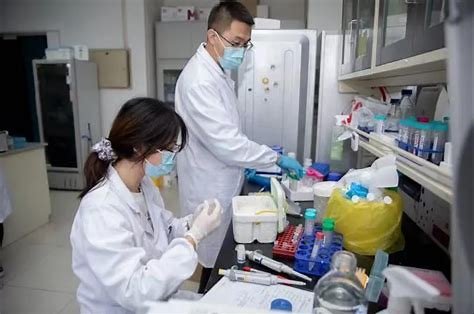Belief BioMed and Takeda China Announce NMPA Approval of China’s First Gene Therapy for Hemophilia B
11 April 2025 | Friday | News

Image Source : Public Domain
Belief BioMed ("BBM") and Takeda China jointly announced that BBM-H901 (generic name: Dalnacogene Ponparvovec Injection), has been officially approved by the National Medical Products Administration (NMPA) for the treatment of adult patients with moderate to severe hemophilia B (congenital coagulation factor IX deficiency). As the first approved hemophilia B gene therapy in China1, BBM-H901 is developed and manufactured by BBM, and Takeda China is responsible for its commercialization in mainland China, Hong Kong and Macau. The two parties will integrate their respective resource advantages to accelerate the provision of this breakthrough gene therapy to patients and jointly open up a new landscape in the field of hemophilia B treatment.
Dr. Xiao Xiao, Co-founder, Chairman and Chief Science Officer of BBM, said: "BBM has always been committed to R&D and innovation in the field of cutting-edge gene therapy, and is dedicated to filling unmet medical needs. The approval of BBM-H901 is an important milestone in the development of BBM. As the first hemophilia B gene therapy drug independently developed in China1, BBM-H901 will provide a new treatment option for hemophilia B patients, which is expected to provide patients with an innovative treatment solution and help them return to a normal life. BBM will work together with Takeda China to accelerate the rapid implementation of this innovative therapy. In the future, BBM will strive to accelerate the overseas commercialization process of BBM-H901, hoping to benefit more hemophilia B patients. "
Sean Shan, Senior Vice President of Takeda Pharmaceutical and President of Takeda China, said: "Takeda is honored to collaborate with BBM to bring the first locally developed hemophilia B gene therapy1 to the Chinese patients with hemophilia B. The approval of BBM-H901 will further enrich our portfolio in hemophilia and rare disease areas, and will help more patients to benefit from innovative treatments. In the future, Takeda China will continue to deepen our strategic cooperation with local partners, to accelerate the commercialization of more breakthrough therapies, ensure China's medical innovation can benefit more patients and contribute to the high-quality development of China's rare disease industry."
Hemophilia B is an inherited bleeding disorder caused by the deficiency of factor IX (FIX)2. For a long time, patients can only rely on prothrombin complex concentrate (PCC) or FIX as a replacement therapy3,4. Persistent and frequent bleeding can easily lead to damage of joint structure and function, resulting in a high disability rate5. This not only brings great physical pain and inconvenience to patients, but also comes with the risk of infection, blood clots, etc.3,4. The high medical treatment costs also bring a heavy and constant economic burden on the patient's family.
BBM-H901, based on a recombinant adeno-associated virus (rAAV) vector, can deliver the optimized human coagulation FIX gene into liver cells of patients. Then, coagulation FIX is continuously expressed and secreted into the bloodstream using the host cell gene transcription system, thereby promoting coagulation.
Professor Zhang Lei from the Blood Disease Hospital of the Chinese Academy of Medical Sciences (Institute of Hematology, Chinese Academy of Medical Sciences), leading investigator of the registered clinical study of BBM-H901, said: "The traditional treatment of hemophilia B requires frequent intravenous injections, and the factor level fluctuates with the half-life of exogenous coagulation factors. Some patients are also at risk of developing inhibitors, leading to reduced treatment effectiveness. The approval of BBM-H901 has brought revolutionary hope to Chinese patients with hemophilia B. By a single dosing, the risk of bleeding and joint damage can be reduced, and patients are back to a normal life. We believe that with the continuous breakthrough of scientific research and the accumulation of clinical experiences, the treatment of hemophilia will enter a new era and patients will enjoy a higher quality of life."
In 2019, the first Investigator-initiated Trial (IIT) of BBM-H901 was launched. In 2022, the research results of IIT were successively published on international authoritative journals, The Lancet-Hematology and The New England Journal of Medicine5,6. Ten adult patients with moderate to severe hemophilia B were included in the study, with a median follow-up of 58 weeks after gene therapy, achieving a mean FIX activity of 36.9 IU/dL (one Stage Assay actin FSL aPTT reagent). There were no serious adverse events (SAEs) during the follow-up process, and there were no grade 3-4 adverse events (AEs)5. The long-term follow-up results of more than 3 years were orally presented at the 2024 International Society on Thrombosis and Haemostasis (ISTH) Congress. Compared with the published data in 2022, the patient's FIX activity remained stable at all follow-up nodes. No drug-related SAEs, thrombotic events, nor inhibitors were observed8.
In August 2021, the Investigational New Drug (IND) application of BBM-H901 was approved in China. In August 2022, BBM-H901 obtained the Breakthrough Therapy Designation by the Center for Drug Evaluation, the National Medical Products Administration7, and later on Orphan Drug Designation (ODD) from the U.S. Food and Drug Administration (FDA). In 2024, BBM-H901 obtained the Rare Pediatric Disease Designation (RPDD) from the FDA and the Advanced Therapy Medical Products (ATMP) from the European Medicines Agency (EMA).
In December 2024, BBM released the results of the Phase III clinical study at the 66th Annual Meeting of the American Society of Hematology (ASH). The results showed that after 52 weeks of follow-up, the mean annualized bleeding rate (ABR) of the participants was 0.6, the average FIX activity reached 55.08 IU/dL (one Stage Assay SynthaSIL aPTT reagent), and the average number of infusions of FIX drug decreased from 58.2 times/year before gene therapy treatment to 2.9 times/year after that. Twenty-one of the 26 participants (80.8%) had no bleeding events after treatment, and all participants had no SAEs8. The study is still in the process of continuous follow-up.
|
[1] Up to April 2025. https://www.nmpa.gov.cn/yaopin/index.html |
|
[2] Thrombosis and Hemostasis Group, Chinese Society of Hematology, Chinese Medical Association / Hemophilia Treatment Center Collaborative Network of China. Chinese guidelines on the treatment of hemophilia (version 2020). Chin J Hematol..2020;41(4):265-271 |
|
[3] Mortensen GL,et al. Haemophilia. 2018;862–872 |
|
[4] Srivastava A, et al. Haemophilia. 2020;001–158.P95 |
|
[5] Xue F, et al. Lancet Haematol. 2022 Jul;9(7):e504-e513 |
|
[6] Xue F, et al. N Engl J Med. 2022 Oct 27;387(17):1622-1624 |
|
[7] https://www.cde.org.cn/main/xxgk/listpage/da6efd086c099b7fc949121166f0130c |
|
[8] Feng X,et al. 2024 ASH. Poster 3582 |
Most Read
- Top 25 Biotech & Biopharma Leaders in Sustainable Innovation, 2025
- China’s Biopharma Dealmaking Surges in H1 2025, Driven by Record Licensing and Oncology Focus
- Chikungunya in China: How a “Forgotten” Arbovirus Found the Perfect Storm
- How Innovation Gaps in Biopharma Raise New Safety Concerns
- Smart Implants and the Future of Musculoskeletal Injury Treatment
- How Ethical Gaps in Psychiatry Could Undermine Biopharma Progress
- The Evolving Landscape of Women’s Health Innovation in the Asia-Pacific
- Using NLP-Driven Decision Support in Emergency Health Assistance
- Taiwan Steps Into the Global Spotlight With a New Cancer Therapy
- The Role of Unique Device Identification (UDI) in Tracing Medical Device Safety
- The Importance of a Patient’s Mental Health During Clinical Trials
Bio Jobs
- The State of Biotech and Life Science Jobs in Asia Pacific – 2025
- Avantor’s New CEO Ligner Aims to Unlock Global Potential and Deliver Shareholder Value
- AstraZeneca Commits $50 Billion to U.S. Expansion by 2030 in Biggest-Ever Global Investment
- Thermo Fisher, SAMRC, and South Africa’s Department of Science and Innovation Launch CATIR to Nurture Next-Gen Scientists
- Cube Biotech Appoints Former Sartorius CEO Dr. Joachim Kreuzburg to Board of Directors
- FDA’s AI Transition Marks a Turning Point in Drug Review: Industry Faces Pressure to Adapt Amid 20% Workforce Cut
- WuXi XDC Completes Mechanical Build of Singapore Bioconjugate Manufacturing Hub
News
Editor Picks











